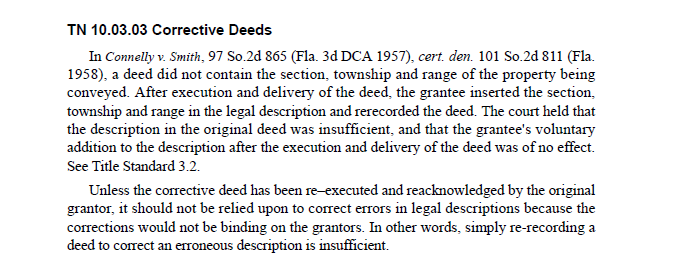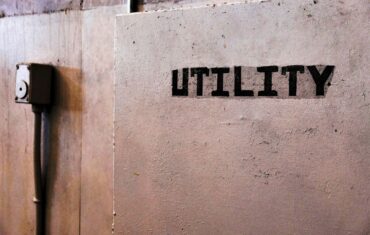To err is human, but the last thing a homebuyer or homeowner wants is an error on their deed.
A deed is a legal document that is signed and recorded to show who has title rights to access and use a piece of real property. This document is required in order to establish and transfer the title from one person to another. Put another way, the deed conveys title from one party to another. Deeds are often thought of as the “vehicle” of the title transfer.
So, you can imagine how important it is that this document is accurate and error-free, but mistakes happen. That’s why title insurance exists! Here is how title agents and agent attorneys can help resolve a mistake on a recorded deed.
Clerical errors are one of the most common title defects, and why homebuyers are encouraged to get a professional title search to protect their property interests (if they live in a state where ownership policies aren’t automatically issued with lender policies).
Some errors you might find on a deed affecting title rights include:
- Incorrect or insufficient Legal Description
- Incorrect name or nickname
- Incorrect consideration amount
- Lack of notary seal
- Lack of subscribing witnesses
- Defective acknowledgments or missing witnesses
- Missing acknowledgment
- Missing marital status of grantors on a non-homestead statement
- Failure to obtain joinder of grantor’s spouse on the deed to homestead property
Legal Descriptions are especially important in a real estate transaction since they dictate what piece of land is being sold. A wrong legal description on the deed is usually found on the mortgage as well since it is created at the same time and the information is simply transposed. Correcting a legal description can take additional steps beyond what’s covered here.
Once an error has been discovered, here are some ways to resolve it.
Three Instruments used to fix deeds with problems
Depending on your state and the error on a deed, there are a few ways to fix a deed. There are a few documents known as instruments that can address the issue. Each one will be recorded in the public record in addition to the original deed with the error.
- Corrective Deed
- Affidavit of correction or scrivener’s affidavit
- A new standard conveyance (Warranty or quitclaim deed)
These documents do not replace or delete the incorrect deed. They are recorded in the public record with reference to the incorrect deed. A real estate lawyer or title agent can help determine which instrument is appropriate to address a specific error.
What is a corrective deed?
A corrective deed is an instrument filed in the public record in addition to the incorrect deed. It’s known as a confirmatory instrument since it perfects an existing title by removing any defects, but it doesn’t pass title on its own.
How is an affidavit used to correct a deed?
In some cases, it’s possible to cure a defect with an affidavit instead of a corrective deed. This document serves as notification of an error in the recorded deed. It is usually reserved for minor corrections, like a misspelling of a subdivision in the legal description or a lack of marital status.
It can be executed by someone other than the parties of the original instrument as long as reasons for the correction and knowledge of facts corrected are stated and evidence of notification of the original parties or their heirs is provided. Typically, an affidavit is prepared and signed by the attorney that prepared the deed for the transaction.
When is a new deed needed?
Corrective deeds are limited in what errors they perfect. Minor mistakes like misspelled or incomplete names and omission of marital status may be fixed with a corrective deed or scrivener’s affidavit. In other cases, some states require a new deed to be recorded for material errors, larger issues like an incorrect legal description, adjusting the amount of consideration, and adding or removing names.
Each state has different rules and regulations for real estate, so if you find an error on your deed, it’s best to reach out to your title company or a real estate attorney to address the issue properly.
Some errors may be “harmless” or may “fix themselves” through curative statutes
Some mistakes aren’t considered an issue. They are harmless to the conveyance or transfer of the title, so they may be ignored.
One example of a harmless error under Florida’s Uniform Title Standard 3.6 is a lack of a date or incorrect date. The reasoning behind this rule is that the date has no bearing on the validity of the deed.
In addition to harmless mistakes, some states may have statutes that will cure a defect over time. These curative statutes often address minor issues that can be cured over time. There are two primary curative limitations statutes in Florida (F.S. 95.231 and F.S. 694.08) that cure the defects of missing witnesses and defective acknowledgments. To be clear, these statutes do NOT cure a total lack of acknowledgment or a void acknowledgment and both come with stipulations for their application.
Steps to fixing an incorrect deed
If it’s determined that a deed is affected by an error that isn’t considered harmless or will not be corrected via a curative state statute, a real estate attorney or title agent will need to cure the deed following your state’s regulations. Each case can vary, so the steps taken to correct a mistake are meant to provide an overview.
- Determine if the error is harmless or fatal to the transfer of title.
- Decide what instrument is best suited to the error.
- Draft a corrective deed, affidavit, or new deed.
- Obtain the original signature(s) of the Grantor(s).
- Re-execute the deed with proper notarization and witnessing.
- The new instrument is recorded in the public record.
Recording a new deed requires the original grantor and re-acknowledgment by witnesses and a notary to take part in re-executing the document through state laws.

So, what happens if the other parties are uncooperative or unable to sign the new deed? What if you can’t find the original grantor?
Deed Reformation Action
A deed reformation action is a court process to determine if there is proof of a mutual mistake, fraud, accident, illegality, or unjust enrichment on a deed. The plaintiff must present clear and convincing evidence that the deed is incorrect or inconsistent with the intention and agreement of the parties, establish that the plaintiff has been injured, and demonstrate that a demand was made to the defendant to remedy the issue but refused to or was unable to comply with the demand.
Much like quiet title action, deed reformation action is seen as a last resort when all other means to correct an issue affecting real property have been exhausted. Usually, this action is done in conjunction with another court action like foreclosure as a way to clean up any clouds on a title before repossessing a property that’s in default.
An error in a deed must be corrected before an underwriter will insure a title policy. Generally, these documents to correct an error in a deed must be drafted by a real estate attorney or the agent directly involved in the closing. While PropLogix is unable to help agents resolve errors in this way, our Title Curative services help to find these issues before a closing so that proper steps may be taken to correct them.











